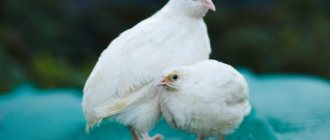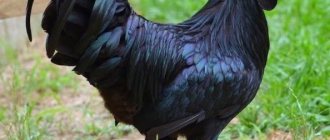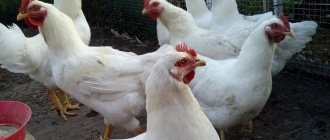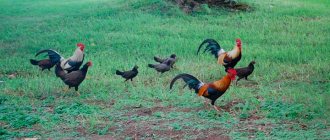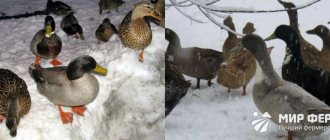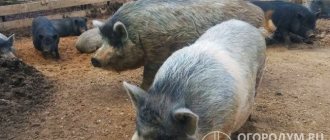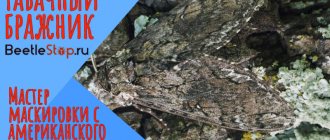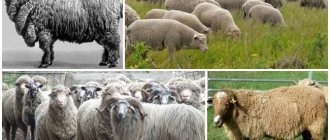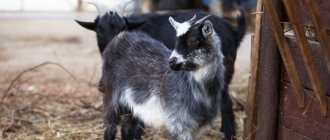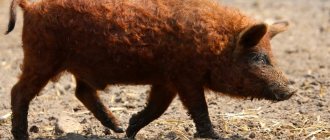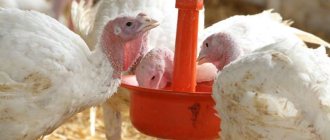The Chinese painted quail is native to Asia and is the smallest member of the Galliformes order. Its length is about 14 cm, and its weight ranges from 28-40 g. There is evidence that previously in China these birds were taken on the road and used to warm hands in cold weather. Currently, they are kept for their beauty and their eggs, which are considered a delicacy.
The Chinese quail is a fertile species characterized by sexual deformity. They live in southeastern Asia, Africa and Australia. In summer they are kept in the fresh air, in winter - in heated enclosures and cages. Quails are very sensitive to drafts. When keeping them in captivity, it is necessary to maintain a certain lighting and heating regime in the room where they live. Quails are fed grain, insects, herbs, and worms.
Appearance and character of the bird
The Chinese painted quail can be confidently called the most striking representative of its species from a visual point of view - its brothers are not nearly as noticeable. In terms of size, the bird is quite small: its body length varies between 11-14 cm, plus a 3 cm tail. Such quails weigh on average 45-70 g. Females and males have black beaks (the latter have a slight shade of blue), yellow-red paws and brick-red irises.
Chinese painted quails have a pleasant, quiet singing. The lifespan of birds in captivity is approximately 10 years.
The character of the Chinese painted one is quite calm. The bird treats its cage neighbors normally, especially if they are on the upper floors. But for adult males of this species of quail, it will be difficult to get along together - they defend their territory and show aggression towards each other. Therefore, it is better to keep one male and one female in a separate cage, or the housing area should be large enough for several pairs. In females such aggressiveness is not observed.
Description
Chinese quail (Latin name Chinenesis Coturnix) belongs to the pheasant family. In the wild, varieties of Chinese quail live in the Asian part of the globe.
External features
These are small birds, the weight of the largest specimens does not exceed 45 g. Males of this breed have very colorful and bright feathers, females are gray and inconspicuous. Birds are kept in households as an ornamental breed of birds, as well as for eggs and meat. Quail eggs are considered a delicacy in many countries. Did you know?
Sex differences
Sexual dimorphism:
- the female is smaller than the male;
- males are brightly colored, while females have a plain-looking “outfit”.
The natural color of the male is dark brown with a blue-gray chest and a gray-brown tint on it, the belly is dark red, the throat is black, with white and black stripes. The color may also contain lighter shades of brown, which stand out in a motley pattern on the wing feathers.
The female does not have the variegated coloring of the male. It has brown feathers with a rusty brown coloring on the belly and breast. Females and males have black bills, orange or yellow legs and a short dark brown tail.
female - 12.5 cm;
male - up to 14 cm.
female - from 66 to 67 mm;
male - from 65 to 78 mm.
Find out how to feed quails properly.
female - 20–22 mm;
male - about 25 mm.
As a result of selection, Chinese quail with silver colored feathers was also bred. Males and females of the newly created species have the same feather color. Important! If down and feathers begin to fall out of Chinese quails, this is a signal that there are drafts in the room where they are kept. The poultry farmer needs to eliminate cracks into which drafts penetrate, or direct fans in the other direction to ventilate the room.
This small exotic bird is widespread in Asia. It can be found in India, Ceylon, the Far Eastern regions of China, the Indonesian archipelago and New Caledonia. Chinese quails live in rice fields and marshy plains, where they find food consisting of wild seeds and crop residues, and sometimes small insects. Living in vast, flat spaces, birds feel safe from attacks by predators.
These birds are very prolific and lay tiny speckled eggs the size of an olive. In our country, quail eggs are considered a delicacy. They are rich in vitamin D and high in antioxidants. Females begin laying their first eggs at 6 weeks of age. During the year, the quail lays from 150 to 200 eggs.
Birds body weight:
- female - 28 g:
- male - 40 g.
Did you know? A person only needs to eat two quail eggs a day to get half the doctor's recommended daily dose of vitamin D.
Painted quails are generally called the most beautiful bird of the species. This variety of birds is an ornamental breed due to its natural appearance.
Painted Chinese quail
The color and size of the bird in male and female Chinese quails have striking differences. Males are characterized by a brown color on the chest and back of the head, which has a black border. It runs along the neck, framing the white feathers. The female's throat is white.
Description of the breed
The painted quail takes on a mixed color: dark gray on top, the breast is red, and the throat has a pattern of black and white flowers. The beak color is black and the paws are orange.
Female Chinese quail have gray feathers on their back and brown feathers on their chest, with brown tips throughout their body.
Read more: Meyer lemon variety description, home care
The size of the Chinese quail carcass is fourteen centimeters, and the length of the tail is three and a half centimeters. The color of the male's head has gray-blue shades. The color of painted quail feathers varies from silver to brown.
This species was found in South Asia and Australia. In the wild, they build nests on the ground, collecting leaves and dry grass.
Representatives of the Chinese quail species live in pairs and the male takes an active part in raising the chicks. They make nests in the meadows. Having chosen a place for the future nest, the male begins his duties of protecting the territory and protecting the offspring. Males show great care towards their female, offering her food before starting the meal.
Their voice is quiet and pleasant.
Male and female painted quail
Breeding of the breed is based on keeping quails in groups so that there are several females for one male. Build breed enclosures in bushes and on grass; in other conditions, Chinese quails do not hatch eggs. During one oviposition, the female lays up to ten eggs, olive-colored with black spots. The incubation process of this species lasts about fourteen days.
The Chinese quail rarely flies, preferring to run. Take this feature into account when building an enclosure.
Keeping Chinese birds requires multiple hiding places and one closed corner in the house. This construction is due to the fact that they are kept in groups and in case of aggression between individuals, these closed corners will become places of shelter. Create a large floor area to prevent the house from becoming cramped, and consider the number of birds and their sizes when calculating the length and width.
Chinese quails need a spacious cage
A peculiarity of keeping the Chinese breed is their reaction to fear; they fly vertically upward. Take this point into account when building a poultry house; quail often hit their heads at such moments. You can line the top of the enclosure with soft material to avoid injury, but in such a way as not to reduce illumination. Build a poultry house on the basis that the height should be at least a meter.
The nutrition of Chinese quail is based on:
- grain crops;
- insects;
- fresh herbs;
- egg feed;
- mixed feed:
- worms and moths.
To bathe Chinese quails, place them in a separate part of the enclosure with a sand bath. The bathroom itself should have high sides.
Birds are fed three and four times a day. Birds hatch eggs in enclosures, having previously prepared a nest in a recess in the floor, in a separate part of the enclosure.
Feeding of chicks is based on feed with a high protein content.
There are frequent cases where females do not incubate eggs on their own. For this reason, you should prepare an incubator nearby.
This variety is not endowed with certain differences, with the exception of the appearance of the quail and the place where the eggs are hatched.
In group breeding, chicks are hatched in an incubator
In China, these types of quail were used exclusively as a decorative species and many breeders carried them with them as hot water bottles.
It is preferable to keep them in pairs, as this is inherent in their nature. And build enclosures on a grassy floor, where they can build their own nests.
They love natural lighting, but an excessively dark room will not have a favorable effect on their development. The diet must include all the necessary vitamins and minerals. If you keep them in pairs, an incubator is not necessary. But, when kept in groups, females will not hatch eggs themselves.
This type of quail is the smallest and most beautiful. Individuals of Chinese quail can live up to ten years when kept in the wild.
Add supplements containing vitamin D to the diet. And give the quails the opportunity to walk in the fresh air and under the sun's rays, or ventilate the enclosure and build in artificial lighting. Prevent drafts and clean the house regularly.
If you keep Chinese quails in pairs, they will hatch the eggs on their own.
For better absorption of food and proper functioning of the esophagus, give them separate bowls with sand and gravel. and change their water.
During the egg-laying period, females are provided with nutrition with the highest content of minerals and vitamins. For this you can use compound feed. After finishing laying eggs, birds need rest. To do this, the female quail is transplanted into a separate cage with soft food and given grain food. Reduce the duration of lighting in an individual cage.
Some farmers make the room deliberately darker than usual and lower the temperature. For this purpose, in the cold season, you can place it on the balcony.
If your bird is exhausted from hatching eggs, give her a light abdominal massage and lubricate the cloaca. In addition, give her a solution of immunofan and add calcium gluconate.
Do not add oats to grains under any circumstances; quails do not digest this type of grain.
This type of quail is not used for the purpose of obtaining meat or eggs, as they do not have high indicators for these parameters.
They are not overly picky about their care.
Quails are one of the most popular bird species bred by humans to satisfy their own gastronomic needs. Currently, science knows more than 40 quail breeds, more than half of which are actively raised on poultry farms. The main reason for the popularity of the species is its high egg production, however, recently the trend towards breeding quails for meat has increased.
Chinese quail (Latin name Chinenesis Coturnix) belongs to the pheasant family. In the wild, varieties of Chinese quail live in the Asian part of the globe.
External features
These are small birds, the weight of the largest specimens does not exceed 45 g. Males of this breed have very colorful and bright feathers, females are gray and inconspicuous. Birds are kept in households as an ornamental breed of birds, as well as for eggs and meat. Quail eggs are considered a delicacy in many countries.
Did you know? Japanese quail (Coturnix japonica) eggs were successfully incubated on the Mir space station. In space, small quails were safely born from an incubator.
Sex differences
The natural color of the male is dark brown with a blue-gray chest and a gray-brown tint on it, the belly is dark red, the throat is black, with white and black stripes. The color may also contain lighter shades of brown, which stand out in a motley pattern on the wing feathers.
Description of the breed
note
Chinese painted quail
Differences between male and female
Sexual characteristics in the animal world are not always clearly visible. In the same breed of quail, you can immediately determine the sex of an individual by eye: females have an inconspicuous gray-brownish color, males have a bright color with a blue tint and a characteristic pattern in the area under the beak.
These quails are called “painted” because of the males - they have a white stripe from the beak to the eyes, under it there is a black stripe, turning into a spot on the throat, framing a white beard.
Distribution and origin of the breed
This species is widespread in southeast Asia up to the islands of New Guinea and the Australian continent, and is also found on the African continent. Due to the large area of its habitat, including the vast territory of China, the name of the breed is quite understandable.
In China, the bird has long been valued as an ornamental pet. In Europe, this breed began to gain popularity only in the 17th century.
In the wild, the painted quail settles in wet meadows and uses dry grass and leaves to build nests. Birds live in pairs, the male (which is quite rare in such animals) participates in raising the offspring: before the chicks appear, he brings food to the female and protects the nest, after the chicks appear, he helps the female with raising and raising the offspring.
Living in the wild
As already mentioned, the habitat of the painted quail is quite extensive. Single specimens are found in Africa. They mainly live in the mountains at an altitude of about 1800 m above sea level. In some African countries, such as Nigeria, Chinese quails only nest during the rainy season, then fly to other areas. In Asia and Australia the number of birds is greater.
The painted quail lives in the steppe zone with thick grass. It creates paths in the grass that resemble burrows or tunnels. Birds are monogamous and live in pairs throughout their lives. The male takes very touching care of the female. He never begins to eat himself until he shares the food he gets with his girlfriend. Quail feeds on bugs, worms, flies, and plant seeds.
During the mating season, males emit a long, three-syllable whistle. It can be heard several kilometers away. Only the female builds the nest. She lays from 4 to 10 eggs, rarely - 12-14 pieces. She incubates them for 14-16 days. At this time, the male painted quail takes care of the female and brings her food. Both parents care for the offspring.
The chicks are born fully formed and grow quickly. Initially, they resemble, as can be judged from the photo, small striped bumblebees. After 2 weeks they are already flying, and after 2-3 months they become sexually mature. In one season, a couple can lay 2-3 clutches. Their number directly depends on the quality and quantity of food obtained.
What colors are there?
Today, breeders have already managed to develop many different colors from the basic color of the Chinese painted one. Among them, the following stand out:
- blue-headed;
- two-factor;
- redbreasted gold and lightened;
- tuxedo;
- motley;
- with white primary wings;
- golden pearls and so on.
New bird colors are constantly appearing, and lovers of ornamental quails always have plenty to choose from.
Home conditions
This breed of quail can be kept both in an apartment and in a private house. These birds are quite small in size, so they won’t take up much space.
Room
Cages or aviaries are usually used to keep such quails. Among the main requirements for the premises for these birds it is worth highlighting:
- height – about 100 cm;
- area – 1.5-2 sq. m;
- It is better to cover the bottom with earth or short grass;
- the canvas is made of soft materials like fabric or fabric mesh;
- sand bath with a layer of sand 3-4 cm;
- places for shelters and nests.
When arranging a room for quails of this breed, it is worth considering that they are ground birds, so there should not be any special elevations in their home. A soft ceiling is needed so that the bird does not get hurt when frightened - at this time the quail is able to jump sharply upward.
Other conditions
Natural light is most suitable for this breed. These birds are accustomed to dim light, because in nature quails choose shaded thickets to live in. In excessively bright lighting, birds may become more aggressive.
The room must be heated, the temperature must be maintained at a suitable level.
At low temperatures, the bird's egg production decreases, until it stops completely. The most suitable air temperature for quail is +16-18°C. Sometimes it can be a little hotter, but the main thing is not to let it drop to +10°C.
Upon completion of the laying, it is better to give the female a rest by transplanting her into a separate, darker room and returning her to the usual diet of an adult bird. Also, a decrease in the temperature is often used.
Summer and winter maintenance
In summer, it is advisable to keep Chinese painted quails outdoors. This will allow the birds to bask naturally while receiving the required amount of vitamin D.
For winter keeping, birds need a well-heated room. Such an aviary should be divided into a warm internal part and a cold unheated part for birds to walk around.
The Sparrowhawk is built from brick or wood, and the front wall, where the walking part will be, is well glazed so that there is as much light as possible inside.
Sawdust or sand is used to fill the floor in the enclosure. It is necessary to install several powerful electric lamps at a short distance from the floor. In front of the entrance door of the enclosure, a small vestibule should be installed, which will serve as additional insulation for the room and make it difficult for various predators to get inside.
Features of quail feeders
The feeder for decorative quail breeds that are kept alone should be placed outside the cage near the hole in the side wall - this way the bird can easily get food.
Glass, plastic, and porcelain products are considered the most convenient and hygienically clean. Materials such as copper or wood should not be used to make feeders.
When birds are kept in groups, feeders should be moved outside the cage and placed on the front of the cage. The equipment used when feeding quails should be convenient for maintenance, minimize the loss of bird food, and be kept dry and clean. The accessibility of the feeder when keeping birds in groups is extremely important, but it should be noted that the birds should not be able to stand with their paws in it in order to avoid excessive contamination of the feed and possible injury to the birds.
Feeding
For the full development of birds, so that they are healthy, in good health and lay eggs regularly, they need to be fed properly. Proper feeding of quails takes a lot of time. Feed must be given to the bird at a certain period of the day, following a predetermined regimen depending on the purpose of keeping it. In this case, the feeders should be filled according to the rules, and the water in the drinking bowls should be changed.
It is necessary to monitor the freshness of the feed, to prevent the bird from eating spoiled product and from getting foreign impurities into the food. Seeds fed to birds must have a normal degree of germination.
Varieties of food and diet of quails
Chinese painted quails are unpretentious in feeding. These are omnivorous birds that consume relatively small amounts of food.
To do this, it is customary to include in the poultry diet:
- crushed grain;
- different types of insects;
- finely chopped herbs;
- egg feed;
- mealworms;
- vitamin and mineral supplements.
The feeding norm for the breed is the standard 3 times a day. The typical poultry diet includes a mixture of small grains with some sprouted grain, which is often wheat.
Quails need sand for normal digestion. Therefore, a container with coarse river sand should be installed in the poultry house, which should be separated from the feeder with the main feed.
For constant feeding of females, compound feed is used only during the period of incubation of eggs. If the female is too exhausted after laying, she can be helped by adding calcium gluconate to the food and using Immunofan solution.
Water should always be present in the room for keeping quails. It is advisable to change it a couple of times a day or when it gets dirty. The temperature of the water in the drinking bowls should be maintained at a certain level - it should be slightly cool, and if necessary, the water should be heated. In winter, drinking water should be warm so that the birds do not catch a cold.
Supplements and vitamins
Among the most common vitamins and additives for quail feed, it is worth highlighting:
- Protein-vitamin supplement (PVS). May be included in quail feed.
- Vitamin supplements . They are used only in the absence of succulent feed (greens and carrots). Trivit and tetravit are commonly used.
- Yeast. Rich in B vitamins. Baker's, feed, brewer's, homemade and hydrocarbon yeast are used as an additive to grain mixtures.
- Premixes. They are concentrated mixtures of vitamins and mineral salts with the addition of antioxidants. Mineral and vitamin premixes should be fed to quails only according to the instructions of the premix manufacturer. Premixes are rich in protein, but have a short shelf life.
- Chiktonik. A common veterinary drug, which is a complex mixture of vitamins, mineral salts, amino acids, growth factors, appetite stimulants, tonic and aromatic additives.
You cannot overdo it with such additives - they must be used strictly according to the instructions in order to avoid negative effects on the health of the bird.
Diseases
Painted quail are resistant to most diseases, however, they may suffer from the following diseases:
- Newcastle disease (pseudoplague of birds) . It is transmitted through the droppings of sick birds and contaminated equipment; rats, dogs or cats can also be spreaders. Symptoms are drowsiness, poor appetite, mucus discharge from the beak, difficulty breathing. There is no specific treatment; the sick bird is isolated in quarantine until recovery or death (in approximately 15-30% of cases). Prevention: regular cleaning of the enclosure and equipment, isolation from contact with mammals.
- Psittacosis . It is transmitted through contact with sick birds; infection through food is possible. Symptoms: lethargy, drowsiness, difficulty breathing, out-of-shape and ruffled plumage, inflammation of the eyes. Treatment: not advisable, the bird will remain a carrier, although the use of tetracycline and erythromycin is possible. Prevention: isolation of sick birds, avoidance of contact with other poultry (possible infection from chickens or ducks in which psittacosis is asymptomatic). Attention: psittacosis is dangerous for humans too!
- Pullorosis in quails . Symptoms: drowsiness, drooping head, sick chicks often fall on their chests and squeak pitifully. Treatment: inappropriate, patients are rejected. Prevention: sterilization of the brooder before receiving a batch of hatched chicks, maintaining the temperature regime, using good-quality food.
- Salmonellosis . Source of infection: droppings of sick birds, consumption of infected eggs by quails. Symptoms: intestinal upset, weakness, lack of coordination, possible joint inflammation, paralysis. Treatment: non-existent; sick birds are discarded. Prevention: cleaning the enclosure, using benign eggs.
- Parasites
- Infectious
- Other
Worms (helminths)
Roundworms that cause various diseases and, as a result, serious disorders in the body of birds
Read
Pere-eaters
How to deal with them using folk methods? How can I prevent parasites from appearing again?
Read
Mite
Diseases caused by the parasite. Symptoms, treatment, recommendations for prevention
Read
Newcastle disease (pseudoplague)
What is it and how to avoid infection? Main characteristics of the disease
Read
Pullorosis
Description of the disease, symptoms, treatment, preventive measures
Read
Aspergillosis
An infectious disease that affects the respiratory organs and leads to the death of the bird
Read
Psittacosis
Disease with severe respiratory disorders
Read
Salmonellosis
Symptoms of acute and permanent forms of the disease, treatment and prevention
Read
Colibacillosis
How to identify the source of the disease, how to cure a sick bird and immediately take preventive measures?
Read
Smallpox
Causes, symptoms of various forms, preventive measures and treatment methods
Read
Pecking
How does behavior disorder manifest itself, why is pecking dangerous and how to eliminate it?
Read
Rickets
A chronic disease characterized by impaired calcium-phosphorus metabolism
Read
Inflammation of the oviduct (salpingitis)
An inflammatory disease that can be effectively treated in the early stages. How to cure and restore egg laying?
Read
Breeding Chinese painted quail
To successfully keep and breed quails, they need to create decent living conditions. Complete bird care includes many daily tasks that provide these conditions. Among them are:
- compliance with the feeding regime;
- control of temperature, humidity, lighting of the bird room;
- egg collection;
- control of the incubation process and raising of chicks;
- maintaining inventory and equipment in proper condition;
- compliance with sanitary and hygienic standards for keeping birds.
Differences in internal routines are due to many factors, including the seasons, the occupation of the birder, the purpose of poultry farming, and so on.
To breed birds of this breed, it is worth keeping them in pairs, because this is closer to the natural habitat conditions of quails. Chinese quails hatch eggs only on grass or in bushes - taking this into account and the prospects for breeding, it is necessary to arrange the premises accordingly.
At one time, the female lays up to a dozen eggs, which she incubates for about 2 weeks.
When Chinese painted quails are kept in groups, the likelihood that the female will hatch the eggs herself is reduced. Then the eggs may need to be incubated. An incubator is suitable for this, in which it is possible to set the temperature to 37.5-38°C for 2 weeks.
Reproduction process
The Chinese quail is a monogamous species that retains its pairs for the mating season and reproduction throughout its life. The period for males begins with a high-pitched three-syllable sound in the form of a whistle.
The construction of the nest in the described species of birds is carried out exclusively by the female. During one oviposition, she usually lays from 4 to 10 eggs; in rare cases, a quail's oviposition numbers up to 12-14 eggs. At the same time, the color of the eggshell can vary and be different shades of yellow and brown. Sometimes the eggshell is covered with contrasting bright specks of dark brown, almost black, color.
Just like the process of building a nest, hatching the chicks falls exclusively on the female Chinese quail. The role of the male in raising chicks is to guard and protect the nest.
Hatching chicks takes an average of 2-2.5 weeks. Newborn quails, the size of a large bumblebee, leave the nest on the first day of their independent life. Their diet is no different from the food menu of adult birds. After 14-18 weeks, the young animals become sexually mature and completely independent.
Chinese quail can have more than one brood in a year. Their quantity directly depends on the quality of the food ration, and with sufficient adequate nutrition, hatching and raising chicks can follow one after another.
Care and maintenance of quail
On the third day after hatching, the chick already fledges, and after a couple of days it becomes capable of flying. By the third week, the chicks weigh half the weight of their parents, and by 5-6 weeks it is already difficult to distinguish them from adults. By the end of the second month, puberty in quails ends. All this time, the chicks need special housing and feeding conditions.
Conditions of detention
When keeping young animals with their parents, it is necessary to ensure that there are no aggressive actions from adults. Otherwise, the birds are seated. If there are no threats from adult quails, then the chicks will bask in the plumage of their parents. When keeping chicks separately, they need additional heating.
For optimal growth of chicks, it is worth providing them with 24-hour lighting. It is best to line the bottom of the cage with fabric.
In the first month of cultivation, maintain the temperature at the level indicated in the table:
| Growing days | Cell temperature (°C) | Room temperature (°C) |
| 1-7 | 35-36 | 27-29 |
| 8-14 | 30-32 | 25-26 |
| 15-21 | 25-27 | 23-25 |
| 22-30 | 20-22 | 20-22 |
Feeding
In the first week of life, chicks need to be fed 5 times a day. The following are often used as feed for young animals:
- mealworm larvae;
- mosquitoes;
- fruit flies;
- hard-boiled chicken eggs;
- finely chopped celery;
- grated carrots;
- poppy seeds.
For young birds, sippy cups are installed in the cages. To do this, place an inverted half-liter jar of water on the bottom of a flat dish. It is necessary to insert a gasket a couple of millimeters thick between the bottom and the neck of the jar, which will provide space for the unhindered penetration of water into the drinking bowl.
For proper development, chicks need to have mineral supplements added to their feed. You can buy them today at veterinary clinics.
From 4 weeks, the chicks begin to switch to the diet of an adult bird.
What to feed
In order for feathered pets to develop normally and feel healthy, and also to please the poultry farmer with good egg production, it is necessary to provide them with a complete and varied diet. The diet of adult and small birds differs significantly.
Little chicks
In the first week of life, small quails are fed at least 5 times a day, then - 4 times, and closer to a month - 3 times.
- The chicks eat mealworm larvae, mosquitoes, fruit flies, hard-boiled chicken eggs, finely chopped celery, grated carrots and poppy seeds.
- Sippy drinking bowls are provided for children in cages. Place a half-liter jar of water turned upside down at the bottom of a flat dish. A spacer of two or three matches is inserted between the neck and bottom of the saucer. This will create a gap through which drinking water will freely penetrate from the jar into the drinking bowl. Having drunk from such a drinking bowl, the chicken will never be wet or freeze.
- Chicks require mineral supplements for proper development. They can be purchased at veterinary pharmacies and mixed into food.
- At the fourth week of life, babies begin to gradually switch to a diet intended for adult birds.
Chinese quail chicks are yellow-brown in color with black longitudinal stripes. Young quails grow very quickly and change their plumage. At the age of two weeks they learn to fly, and by the sixth week they are usually fully feathered and change the color of their feathers to the same as those of adult birds.
Adult quails
It is advisable to make the diet of Chinese quails as varied as possible.
- In summer, the birds are given a selection of various fresh herbs or graze daily on a green lawn under the supervision of their owners for an hour. Their diet includes: millet, crushed peanuts, hemp and poppy seeds, small insects.
- To slightly diversify the diet, quails are offered small quantities of chopped fruits, berries and vegetables in the summer season. The proposed portion can be increased only after the poultry farmer is convinced that unfamiliar delicacies do not cause diarrhea in pets.
- In winter, the diet is enriched with dried herbs (dandelion, plantain, nettle). It is also advisable to give grated carrots 2-3 times a week: this vegetable is beneficial for birds with a large amount of carotene.
- Drinking water in drinking bowls is changed twice a day. In winter, drinking water should be warm so that birds that are easily susceptible to illness do not catch a cold.
Tips for buying and transporting birds
The choice of purchased quails is an extremely important point, on which much depends in the future. The health of the bird plays a paramount role here. Among the first signs by which the degree of well-being of an individual can be determined by eye, it is customary to highlight:
- dense smooth plumage;
- moderate body weight;
- sparkling eyes;
- pronounced sexual characteristics;
- absence of wounds and droppings around the cloacal feathers.
Birds that are too fat or thin are unsuitable as breeders.
It is best to purchase young birds in the fall - this way, during the winter period they will have time to gain weight, get stronger, and become sexually mature.
Transportation Features
An ordinary wooden box is well suited for transporting Chinese painted quails. One of its walls should be made of rods, like in a cage, but it would be better to make a door in it. To avoid wounds and bruises of the bird during transportation, the box should be lined with hay; it will also retain heat. Too many birds cannot be placed in one box - to maintain optimal temperature and humidity in the room, the pet must be comfortable, especially since it is worth taking into account the stress factor of a change in environment for the birds.
It is better to keep male ornamental quail species one at a time in a cage; for females, joint transportation is acceptable.
It is prohibited to place a newly brought individual in a common room with quails; for the first month it is better to keep it separately. Otherwise, the likelihood of bird disease increases.
Poultry productivity and price
This type of quail is not usually used for meat or eggs, so it is often raised as an ornamental bird. It is easy to breed Chinese painted quail; it is not picky about its diet. Ornamental birds are usually kept for many years, so the age of the bird when purchasing is not as significant as with egg- or meat-producing breeds.
Such quails are easy to purchase. Among the colors of this breed common in our country are usually:
- Individuals of standard color, bleached and silvered . The average cost of a male is 400 rubles, a female is 600 rubles.
- Blueheads. Their cost today varies between 1500-2000 rubles.
Eggs are sold for 40-50 rubles. for ten. The price for young animals is approximately 150 rubles. More often they acquire single females.
Based on the above conditions for keeping, feeding and breeding Chinese painted quails, you can easily start breeding birds of this breed. The special beauty of these quails will bring aesthetic pleasure to every bird connoisseur, be it a novice bird lover or an experienced bird breeder.
0
0
Copy link
